Moving up the small Val di Guéi valley, the Via del Ferro (Iron Way) overlooks groups of buildings in the municipality of Santa Brigida, set in a prime position. At the Santuario (shrine), the road forks, with the Variante Bassa (lower route) along the Val Stabina valley, and the Variante Alta (upper route) towards Cusio and Ornica. The landscape in the municipality shows the presence of mankind, with stepped paths and sections of the municipal road linking the various groups of buildings. The higher route then moves towards the saddle known as Colla (altitude 915 m) before entering the municipal territory of Cusio.
Tracciato Storico
Itinerario escursionistico
Difficoltà: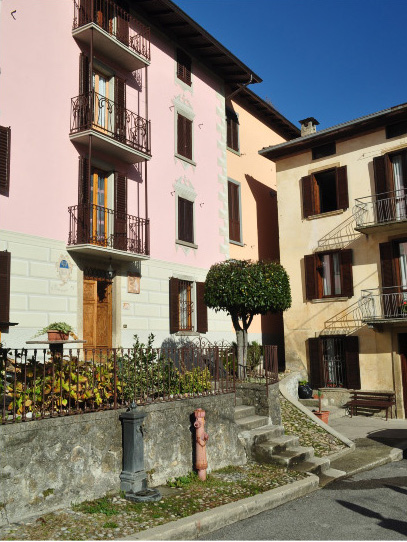
For over 200 years, from the mid-15th century, the painters in the BASCHENIS family followed in their footsteps from father to son, decorating dozens of churches in the Bergamo area with frescoes and bringing the reputation of their home town as far afield as the distant Trentino valleys. Differing in their inspiration and artistic ability, rather reluctant to embrace Renaissance ideals, they were all skilled at interpreting themes of sacred art with taste and originality, sometimes venturing into profane subject matter. Their most notable achievements in the world of great Italian painting comprised the prestigious works by EVARISTO, authentic masterpieces. The artists, no fewer than 19, who left traces of their work belong to two different dynasties: that of LANFRANCO, with four artists active between the second half of the 15th century and the earliest decades of the 16th century, and that of CRISTOFORO, comprising even more practitioners and which continued until the second half of the 17th century. Producing work both in their area of origin and in the Trentino valleys (where the presence of at least ten of them is documented), the BASCHENIS were successful in depicting the labours and sufferings of the mountain peasantry. Their works reflected the aspirations of ordinary people, whether from the Bergamo or Trento areas, people who considered the BASCHENIS painters as uniquely skilled in depicting their own feelings. Almost all the BASCHENIS painters were born in the COLLA district in SANTA BRIGIDA, where the house of the CRISTOFORO branch of the family has been identified.
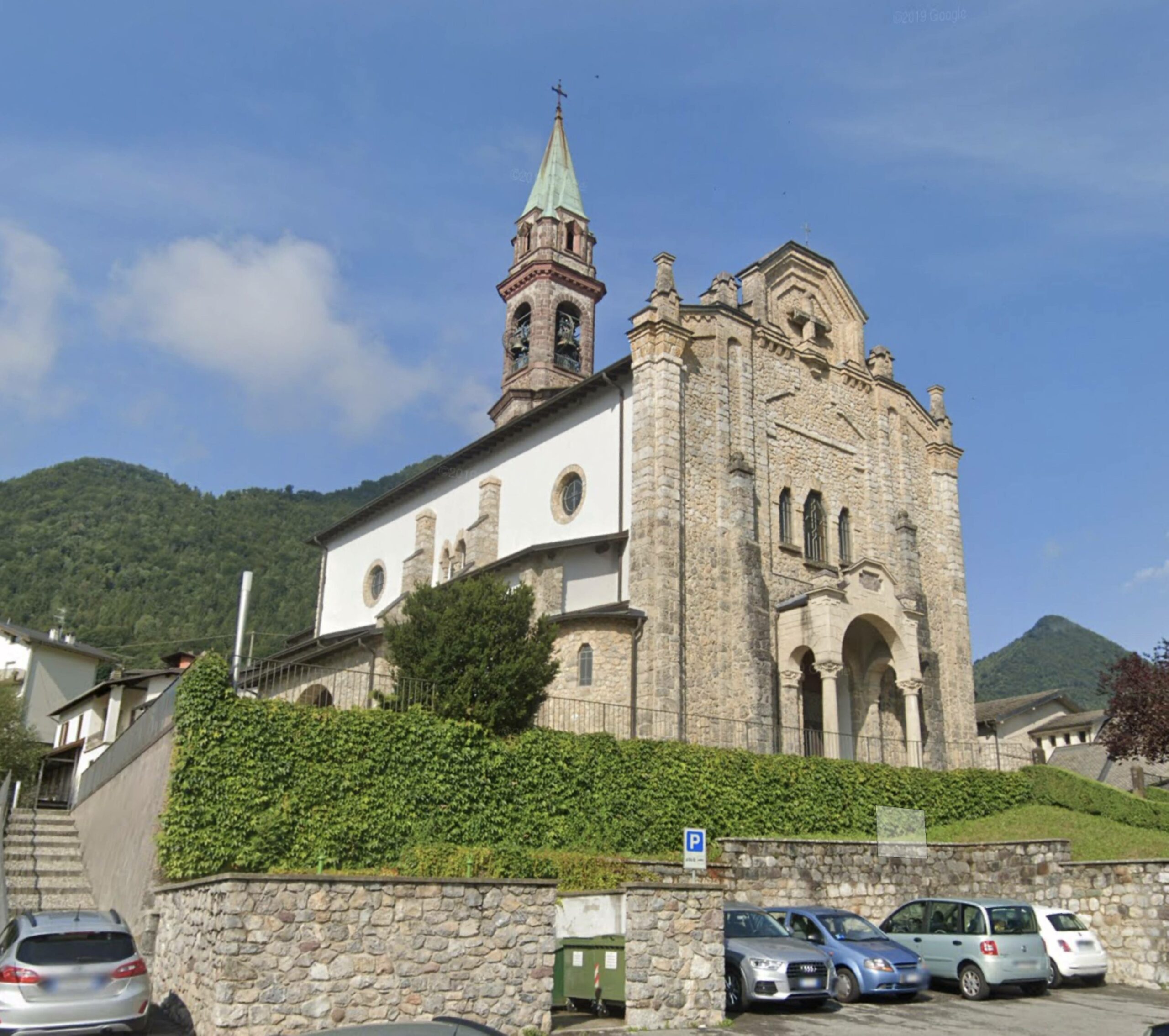
The original building is thought to have been constructed before the year 1000 by a community of Benedictine monks who dedicated it to Abbess Brigid, patroness saint of Ireland and founder of monasteries and educational communities. These Benedictine monks came from Valsassina, like most of the inhabitants of the Valle Averara valley. The building’s architecture developed in successive phases, amongst which was an extension built in the second half of the 15th century. Significant remains of the original construction can be seen in the architecture and paintings in the building’s current state, whose structure reflects the radical transformation implemented in the late 15th century. The church has a single nave divided into five pointed-arched bays supported by stone pillars. The gabled roof is supported by colourfully-painted wooden beams with exposed planking. Two polychrome marble balustrades separate the nave from the presbytery, whose vault is decorated with 18th-century stucco work. The bell tower, with a pyramidal spire, has its base partially incorporated into the church and includes a small belfry with four windows. Outside, there is a large portico covered by a sloping roof abutting the church itself, supported by three pillars and almost entirely decorated with frescoes. The frescoes decorating the portico, which date back to the first half of that century, probably belong to the original church, as their arrangement seems to indicate. In fact, they cover the lower half of the wall, and the upper edge of the compositions apparently coincides with the level of the roof as it was at that time. The cycle of frescoes decorating the portico and interior walls of the ancient church of Santa Brigida is one of the most complete and valuable groups of the many such works that can be admired in various locations of the Brembana Valley.
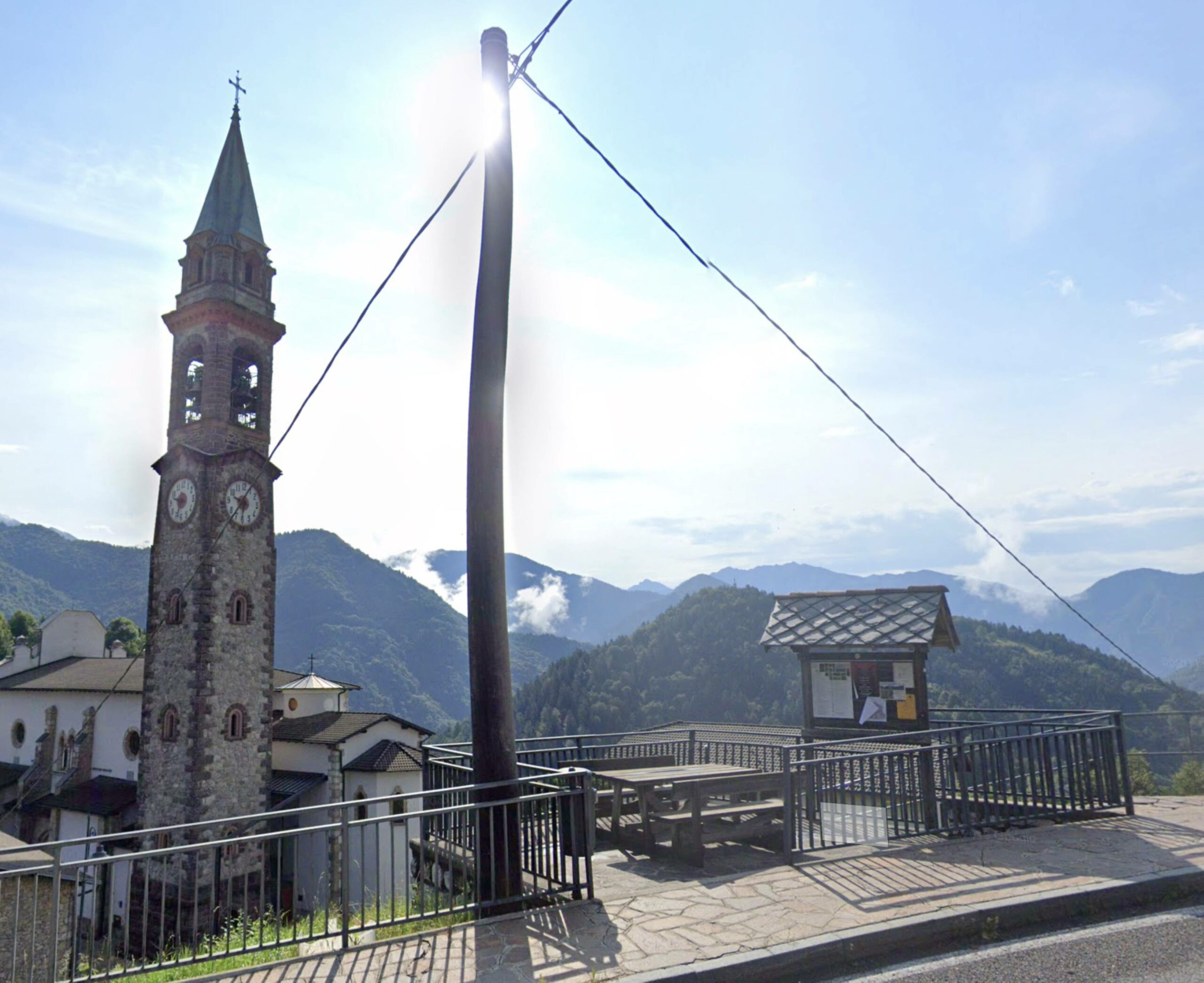
A small picnic area with table and benches, set alongside the provincial road with a view of the Santa Brigida valley and the surrounding mountains.
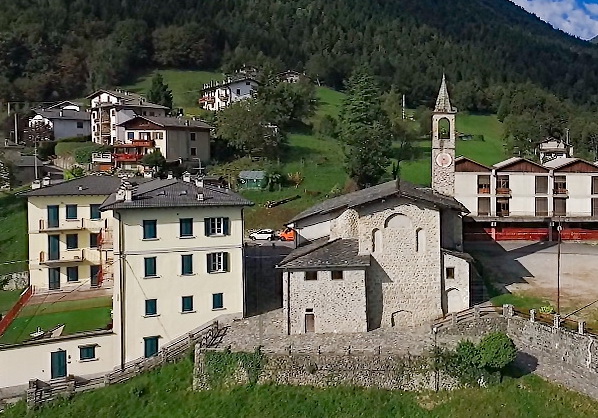
The original chapel dates back to the 10th century and was possibly built on the remains of an earlier pagan sacred building, most likely of Celtic origin. The current building is the result of a series of transformations that took place over the course of about a millennium, with various extensions and decorations in relation to its role as the “mother church” of the Averara Valley. The church of Santa Brigida, which in the 14th century separated from the parish church of San Pietro di Primaluna in Valsassina, was in fact the first parish church in the ancient Averara Valley. The building has a single nave, divided into five pointed-arched bays on stone pillars; the roof is gabled, supported by decorated wooden beams and exposed planking; two polychrome marble balustrades separate the nave from the presbytery, whose vault is decorated with Baroque stucco work. The lower part of the bell tower, which has a pyramidal spire, is partially incorporated into the church, and it has a small belfry with four windows. On the southern side there is a portico covered by the sloping roof abutting the church, supported by three pillars and almost entirely decorated with frescoes. These frescoes, like those on the interior walls, date back to the 15th century and can be attributed to local painters, including Pietro de Asenelis (portico cycle) and Angelo Baschenis (paintings in the chapel of Saint Nicholas of Tolentino). Following the construction of the new parish church, this building was renamed Santuario della Madonna Addolorata (Shrine of Our Lady of Sorrows).
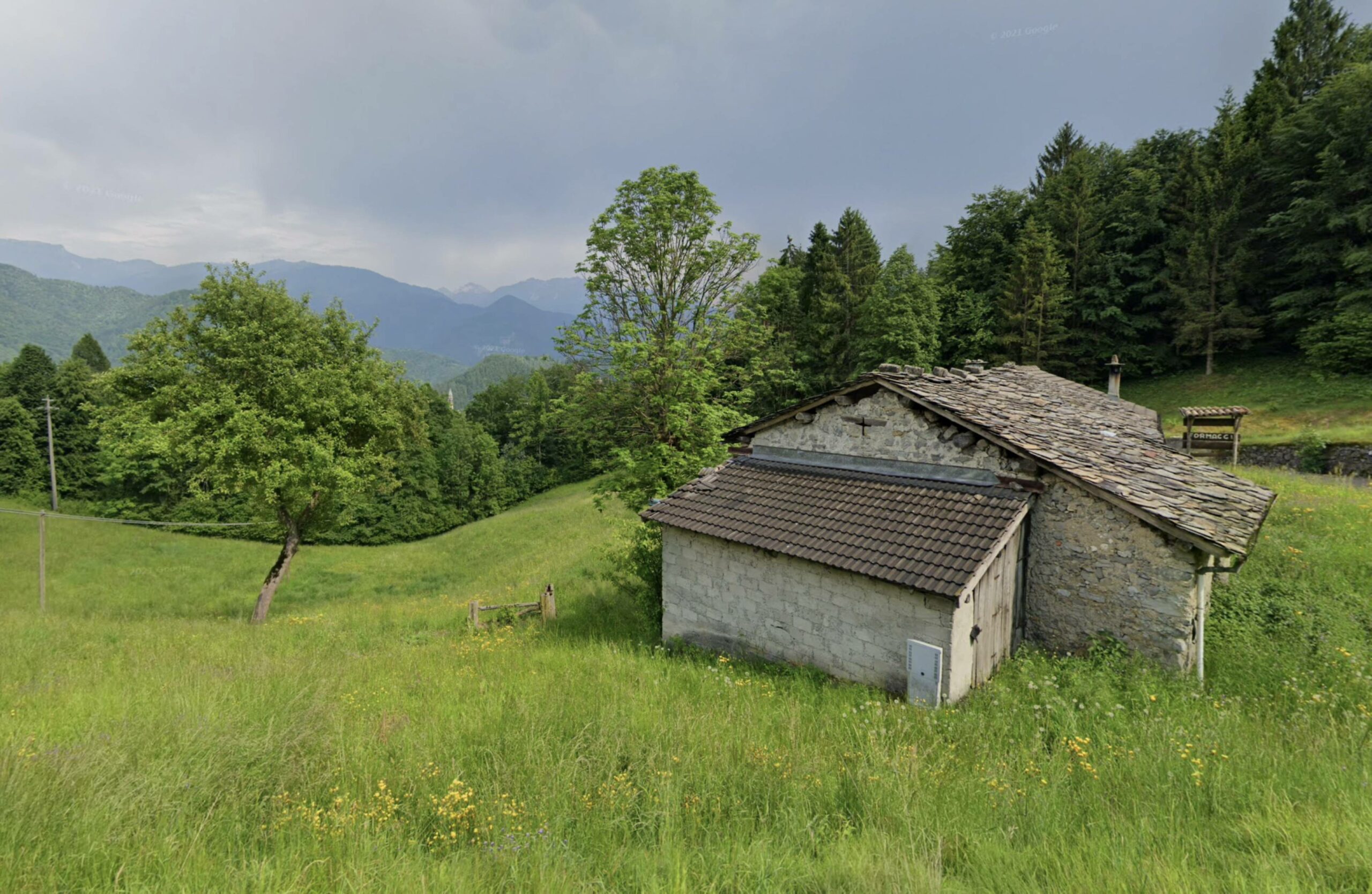
A traditional point of transition on the historical link between Santa Brigida and Cusio, running through a low saddle clad with woodland and pastures.